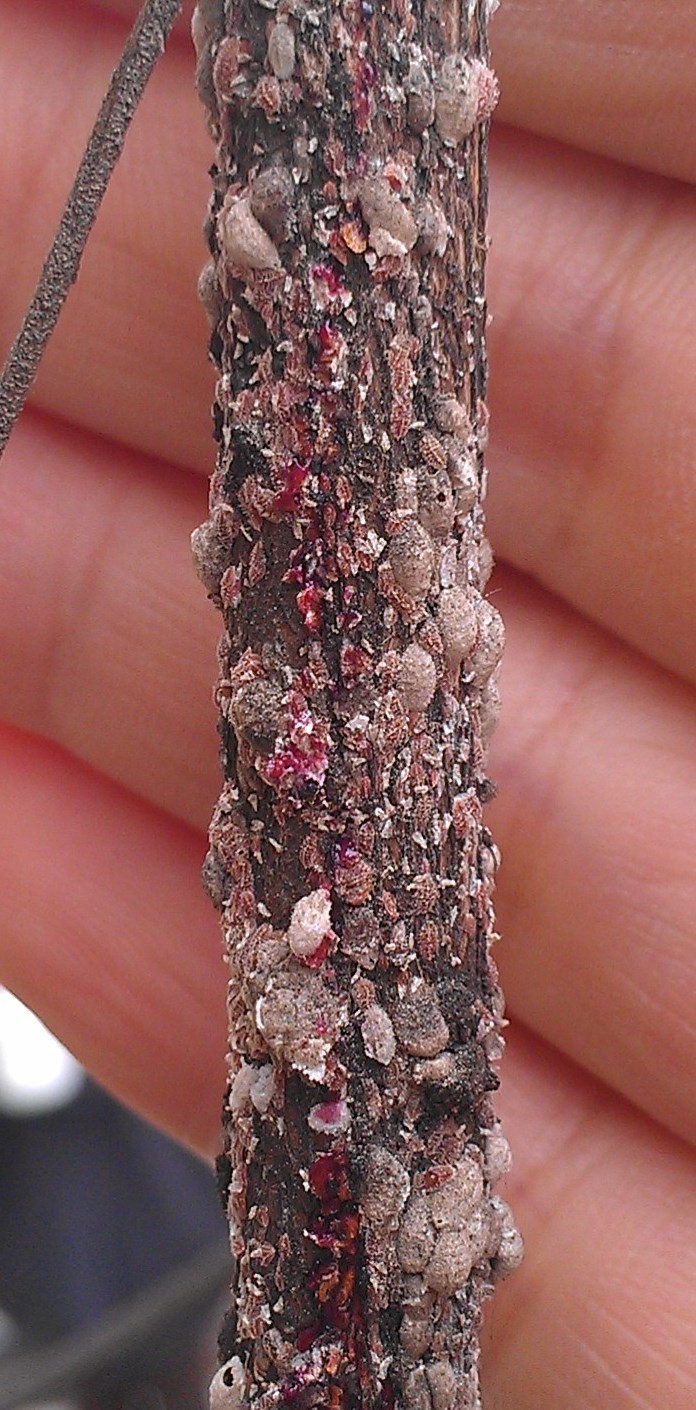
by Gary Knox | Mar 31, 2015
![Figure 1 Note the black sooty mold coating the layers of white and grey scale, believed to be crapemyrtle bark scale, Eriococcus lagerstroemiae. [Photo by Gary Knox]](https://nwdistrict.ifas.ufl.edu/hort/files/2015/03/crapemyrtlescalebark1.jpg)
Figure 1 Note the black sooty mold coating the layers of white and grey scale, believed to be crapemyrtle bark scale, Eriococcus lagerstroemiae. [Photo by Gary Knox]
Symptoms and Appearance
An early symptom of crapemyrtle bark scale is black sooty mold covering extensive areas of leaves and stems as a result of honeydew exuded by the scale (Fig. 1). Individual scale insects are white to gray in color and ooze pink when crushed (Fig. 2). Large populations build up in branch crotches and extend up branches, appearing crusty white to gray. This scale usually is not present on new growth, leaves or slender stems unless infestations are heavy.
For more information and additional photos
Resources, up-to-date information and additional photos about crapemyrtle bark scale may be found at http://www.eddmaps.org/cmbs/. This website will be the major portal for information about this pest.
![Figure 2. This white to grey colored scale oozes pink when crushed. [Photo by Gary Knox]](https://nwdistrict.ifas.ufl.edu/hort/files/2015/03/crapemyrtlescale2.jpg)
Figure 2. This white to grey colored scale oozes pink when crushed. [Photo by Gary Knox]
Research
Research on crapemyrtle bark scale is ongoing. Scientists from the University of Florida, LSU, University of Arkansas and Texas A&M are collaborating to develop Best Management Practices to manage crapemyrtle bark scale in the nursery and landscape. Initial research is examining the biology of the host-insect interaction to better understand its life cycle and stages when it may be most susceptible for control. Additional research will evaluate pesticides and other IPM strategies for managing this pest.
The expanding distribution of this scale and my personal observations of crapemyrtle bark scale throughout China suggest this scale could have a widespread and severe impact on crapemyrtles in landscapes. Please be on the lookout for crapemyrtle bark scale, and report sightings to your local county extension agent and Florida Department of Agriculture and Consumer Services Division of Plant Industry.
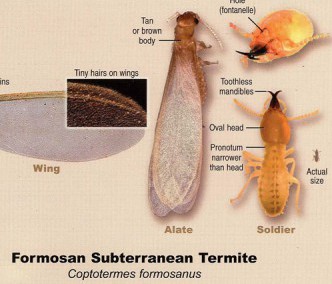
by Sheila Dunning | Mar 31, 2015
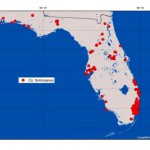 As the ant and termite swarm season begins, here is one species to be aware of.
As the ant and termite swarm season begins, here is one species to be aware of.
The red dots on the map indicate the known distribution of the Formosan subterranean termite, Coptotermes formosanus Shiraki, in Florida, as of 2013. Figure by Rudolf Scheffrahn, University of Florida.
Formosan subterranean termite (FST) acquired its name because it was first described in Taiwan in the early 1900s.
Formosan subterranean termite, Coptotermes formosanus, is the most widely distributed and most economically important wood destroying insect. In the city of New Orleans where this termite species was introduced in the 1950’s, the control and repair costs due to FST are estimated at $300 million annually. A single colony of FST may contain several million termites (versus several hundred thousand termites for native subterranean termite species) that forage up to 300 ft in soil. Because of its population size and foraging range, the presence of FST colonies poses serious threats to nearby structures. The FST generally invades structures from the ground. They commonly enter through expansion joints, cracks and utility conduits in slabs. Any wood-to-ground contact is an inviting entrance for FST infestations.
Studies also found that FST attack many species of living plants. The FST attacks structural lumbers and living plants because they are sources of cellulose. However, this termite is also known to attack non-cellulose materials such as plaster, plastic, asphalt, and thin sheets of soft metal (lead or copper) in search of food and moisture. The combination of water and wood or other cellulose materials provide attractive conditions for the FST. Leaky plumbing, air conditioning condensate, and any portion of the building that may collect excessive amounts of moisture should be corrected to maintain an environment less attractive to FST.
Conventional method for control of subterranean termites, including the FST is to place a chemical barrier between termites and the structure to be protected. Because of the large size of a FST colony, application of soil termiticide beneath a structure may not impact the overall population. Bait stations containing a monitoring device can be first installed in soil surrounding a home. When termites are found in the station, the monitoring device is replaced with a tube containing pesticide bait. Termites feeding in the stations then carry baits to other members of a colony, leading to the demise of entire colony population.
All baits are to be applied by trained pest control professionals. Efficacy and claims of these commercial bait products may differ from one another. It is prudent to read the fine print and ask questions. Many new Florida residents are unfamiliar with homeowner insurance related to Formosan termite damage. If you want to learn more, plan on attending one of the local workshops listed in the link below.
by Shep Eubanks | Mar 31, 2015

Photo 1 Large Carpenter Bee – Photo by Shep Eubanks
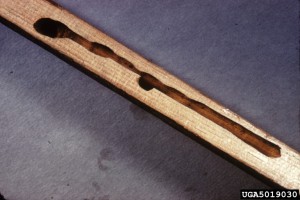
Photo 2 Carpenter Bee Gallery – photo courtesy of bugwood.org
Every year beginning in mid-March to early-April, Extension Agents begin to receive inquiries about managing carpenter bees which are attacking barns, eaves, rafters, and other wooden structures. The bee most commonly responsible for economic damages is typically the large Carpenter bee (see Photo 1)
This is when nesting takes place in structural timbers, fence posts, wooden water tanks, or the like (see Photo 2). Chandler (1958) lists four types of damage done by carpenter bees: weakening of structural timbers,
gallery excavation in wooden water tanks (especially in arid western areas), defecation streaking on houses (see Photo 3) or painted structures, and human annoyance. The last point is included since carpenter bee females may sting (rarely), and male bees may hover or dart at humans who venture into the nesting area.
In general, carpenter bees are a minor problem. Carpenter bees rarely attack painted or varnished wood, while natural wood is more attractive. If there is a problem with carpenter bees, apply a finish to the wood.
These bees often cause problems on structures by boring into the wood surface which is the back face of the trim under the eaves since this surface is usually not painted. A buzzing or drilling sound is heard when the bee is boring into the wood.
If the hole is not visible, often the case when the bee is boring into the backside of trim, look for sawdust on the ground under the hole.
Unpainted, exposed wood is especially attractive to carpenter bees. The most effective deterrent to carpenter bee activities is a painted (oil base or polyurethane) surface.
Insecticide additive paints are available which may repel bees attempting to nest. Wood stains provide little repelling action. Nail holes or exposed saw cuts should be filled in with wood putty or dowels and painted.
If practical, remove severely damaged wood and replace with chemical pressure-treated wood to deter nest construction. To further discourage carpenter bees looking for potential nesting sites, a homeowner should secure all doors, windows, and other building openings during the spring. Non-wood surfaces such as vinyl siding are not damaged by carpenter bees.
A very effective, low cost trap can be constructed from scrap plywood, several of 16 ounce plastic water bottles, a few wood screws, a piece of wire, and a little bit of electrical tape as seen in Photos 4,5, and 6 below. A hole approximately 1/2 inch in diameter works very well. Three or four of these traps positioned at the corners of a building or strategically within a structure can greatly reduce bee numbers with minimal insecticide, structural painting, or other practices. In Photo 4, the trap has only been in place for 5 days. Use of insecticides remains an option.
For more information, contact your local Extension Agent or check out this publication :
Large Carpenter Bees, Xylocopa spp. (Insecta: Hymenoptera: Apidae: Xylocopinae)
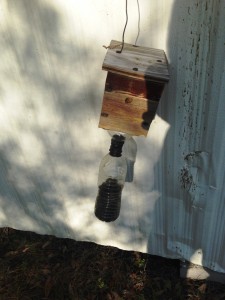
Photo 4 Trap Full of Bees – photo by Shep Eubanks
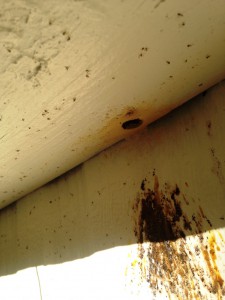
Photo 3 Typical Boring and Defecation Damage – photo by Shep Eubanks
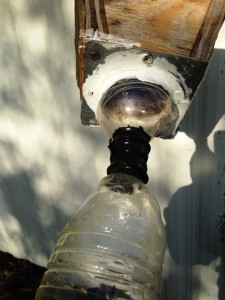
Photo 5 Close up of Trap Construction – photo by Shep Eubanks
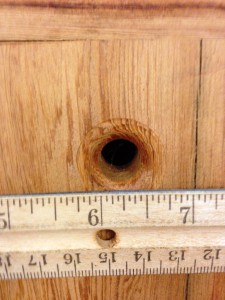
Photo 6 Hole Size of 1/2 inch – photo by Shep Eubanks
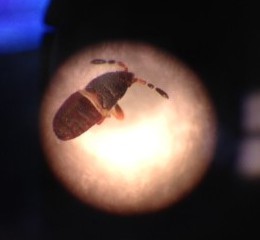
by Julie McConnell | Feb 10, 2015
When talking about pest issues in the landscape, green industry professionals often refer to IPM or Integrated Pest Management.
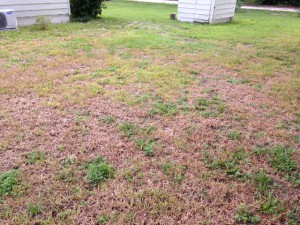
Chinch bug damage to St. Augustinegrass. Photo: Julie McConnell, UF/IFAS
So what is IPM and why should it be used?
IPM is a combination of methods used to manage pests that has the least harmful effect on non-target organisms and the environment. The four categories of IPM are:
-
cultural practices
-
biological control
-
mechanical/physical
-
chemical control
There is not one perfect IPM plan for all landscape situations, but there are some key components to help develop one for any situation.
- Prevent pest problems – choose the Right Plant for the Right Place! Proper planting technique, choosing resistant cultivars, and good maintenance all contribute to overall health and can influence how likely plants are to survive disease, insect, or weed invasions.
- Scout for pests/damage – understand what pests are likely to target common landscape plants. For example, St. Augustinegrass is susceptible to attack by chinch bugs; know what to look for to spot an infestation early.
- Accurately identify the pest – it’s okay to ask for help with this! Your county extension office is a great place to start for both identification and control recommendations. Many times treatments are applied for the wrong pest and that is a waste of your time and money and it can make it harder to get a correct diagnosis.
- Follow control action guidelines – have a plan in place for threshold tolerance. How many pests/amount of damage is okay before

Chinch bug nymph. Photo: Julie McConnell, UF/IFAS
action is taken? What action will you take? Use least toxic methods first and combine the four methods listed above. If using chemicals, know how they work (mode of action) and be sure to rotate properly to prevent resistance.
- Evaluate and revise – continued scouting for pests will indicate if the method is working. Keep records so that you can make changes that will increase effectiveness.
If you are interested in learning more about Integrated Pest Management, visit the IPM Florida website .
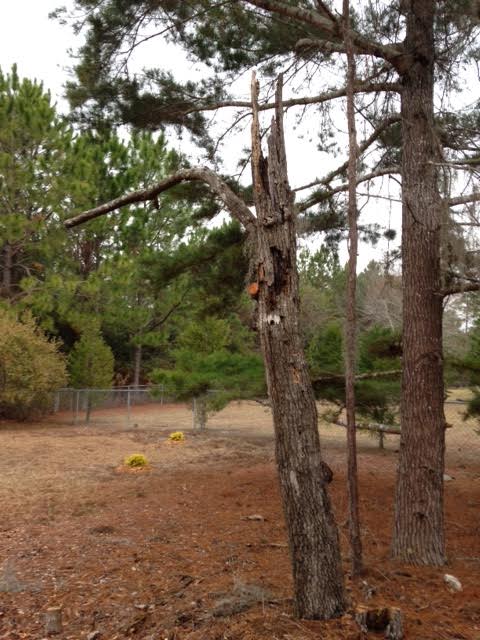
by Julie McConnell | Jan 13, 2015
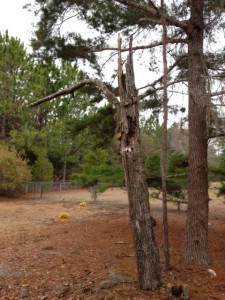
This dead oak tree was trimmed up to make it neater. It is ready for a wildlife resident! Photo: JMcConnell, UF/IFAS
One of the management issues that any landowner will face at some point is what to do when a tree dies in the landscape. The logical response is “cut it down,” but depending on the location and the size of the tree, that may not be necessary and you could be removing potential wildlife habitat.
With any other major decisions about your landscape, always consider safety first. If the tree is in a location where it could damage property or cause harm to people or domesticated animals then it should be properly removed. But what about those trees that are along wood lines or in the far reaches of the yard and not threatening person or property?
Consider leaving the entire tree or modifying it to make it more aesthetically pleasing yet still useful to wildlife. Weak branches or unstable tops may be removed to make the snag less of a risk or to look a little neater.
Some examples of animals that may use dead trees in the landscape are birds, bats, squirrels, frogs, and lizards. Besides the obvious cavity dwelling creatures such as woodpeckers, owls, and bats that are attracted to decaying trees, other animals will be drawn for other reasons. Dead trees in the landscape will become inhabited by insects and fungi which are terrific food sources for birds, mammals, amphibians, and reptiles!
To learn more about providing wildlife habitats in your landscape, please see the EDIS publications listed below or contact your local extension office.
Helping Cavity-nesters in Florida
A Birds-Eye View: How Birds Select Habitat
Dead Wood: Key to Enhancing Wildlife Diversity in Forests

by Sheila Dunning | Dec 2, 2014
 Camellias have been a part of the landscape in the Southeastern United States for over 200 years. They are native to Asia and were introduced near Charleston, South Carolina in 1786. The common name camellia refers to varieties and hybrids of Camellia japonica and to lesser known varieties of C. sasanqua and C. reticulata. The growing conditions in Northwest Florida are well suited for many camellia varieties. Camellias can serve several functions in the landscape including foundation plantings, screens, accent plants, background groupings and hedges. Maximum benefit can be achieved by mass plantings or groupings. Single plants should be focal point in beds rather than randomly placed throughout the lawn. Camellias flower in the fall and winter when their display of colorful blooms is most appreciated. During the remainder of the year their evergreen foliage, interesting shapes and textures, and relatively slow growth make camellias excellent landscape plants. Some camellia growers enjoy competing in flower shows and manipulate the flower buds to achieve larger and earlier flowers. This involves removing competing flower buds and applying gibberellic acid (a plant hormone). Individual cultivars can be selected for size and form ranging from small and irregular to large and upright. Texture and foliage color also differ among the various species and multiple varieties. Mid-season flowering varieties that bloom from November through January are best suited for Florida conditions.
Camellias have been a part of the landscape in the Southeastern United States for over 200 years. They are native to Asia and were introduced near Charleston, South Carolina in 1786. The common name camellia refers to varieties and hybrids of Camellia japonica and to lesser known varieties of C. sasanqua and C. reticulata. The growing conditions in Northwest Florida are well suited for many camellia varieties. Camellias can serve several functions in the landscape including foundation plantings, screens, accent plants, background groupings and hedges. Maximum benefit can be achieved by mass plantings or groupings. Single plants should be focal point in beds rather than randomly placed throughout the lawn. Camellias flower in the fall and winter when their display of colorful blooms is most appreciated. During the remainder of the year their evergreen foliage, interesting shapes and textures, and relatively slow growth make camellias excellent landscape plants. Some camellia growers enjoy competing in flower shows and manipulate the flower buds to achieve larger and earlier flowers. This involves removing competing flower buds and applying gibberellic acid (a plant hormone). Individual cultivars can be selected for size and form ranging from small and irregular to large and upright. Texture and foliage color also differ among the various species and multiple varieties. Mid-season flowering varieties that bloom from November through January are best suited for Florida conditions.
 Warm fall temperatures may prevent early varieties from flowering properly. Late-blooming selections may attempt to send out new leaves before the end of the flowering period which results in “bullnoses”. Bullnosing is characterized by poor quality flowers which do not open fully and may even drop while still tight buds. Extended dry periods while in the bud stage can make the condition more likely. While flowering, camellias need 1 inch of water applied each week. Camellias perform best in partially shaded locations which are enhanced by good drainage and air movement. Fertile, acidic soils high in organic matter are preferred. The soil must be well-drained because camellias will not grow in wet areas. Do not plant them in areas with a high water table and/or hard-pan. This will result in a shallow root system which is more susceptible to injury during dry periods. Camellias should be installed where cold air can move in and out freely, but the area should be protected from strong northwest winds. Plantings under established trees or in areas that has structures to block the wind are usually injured less by cold temperatures. These conditions enable the plants to gradually thaw or warm in the morning before being exposed to direct sunlight. Dense shade may result in sparse foliage and poor flowering. Camellias exposed to full sun may appear yellow-green, but may yield more flowers. Either situation is stressful to the plants and can lead to pest problems. Tea scale is the most common insect on camellias. Scales generally feed on the underside of leaves and may not be noticed until large populations have developed. Symptoms include very small elongated white and/or brown raised “flakes” on the underside of leaves that turn yellowish in color. Tea scale can be controlled with horticultural oil, sprayed after flowering finishes but while temperatures are sill cool, in late winter.
Warm fall temperatures may prevent early varieties from flowering properly. Late-blooming selections may attempt to send out new leaves before the end of the flowering period which results in “bullnoses”. Bullnosing is characterized by poor quality flowers which do not open fully and may even drop while still tight buds. Extended dry periods while in the bud stage can make the condition more likely. While flowering, camellias need 1 inch of water applied each week. Camellias perform best in partially shaded locations which are enhanced by good drainage and air movement. Fertile, acidic soils high in organic matter are preferred. The soil must be well-drained because camellias will not grow in wet areas. Do not plant them in areas with a high water table and/or hard-pan. This will result in a shallow root system which is more susceptible to injury during dry periods. Camellias should be installed where cold air can move in and out freely, but the area should be protected from strong northwest winds. Plantings under established trees or in areas that has structures to block the wind are usually injured less by cold temperatures. These conditions enable the plants to gradually thaw or warm in the morning before being exposed to direct sunlight. Dense shade may result in sparse foliage and poor flowering. Camellias exposed to full sun may appear yellow-green, but may yield more flowers. Either situation is stressful to the plants and can lead to pest problems. Tea scale is the most common insect on camellias. Scales generally feed on the underside of leaves and may not be noticed until large populations have developed. Symptoms include very small elongated white and/or brown raised “flakes” on the underside of leaves that turn yellowish in color. Tea scale can be controlled with horticultural oil, sprayed after flowering finishes but while temperatures are sill cool, in late winter.

![Figure 1 Note the black sooty mold coating the layers of white and grey scale, believed to be crapemyrtle bark scale, Eriococcus lagerstroemiae. [Photo by Gary Knox]](https://nwdistrict.ifas.ufl.edu/hort/files/2015/03/crapemyrtlescalebark1.jpg)
















